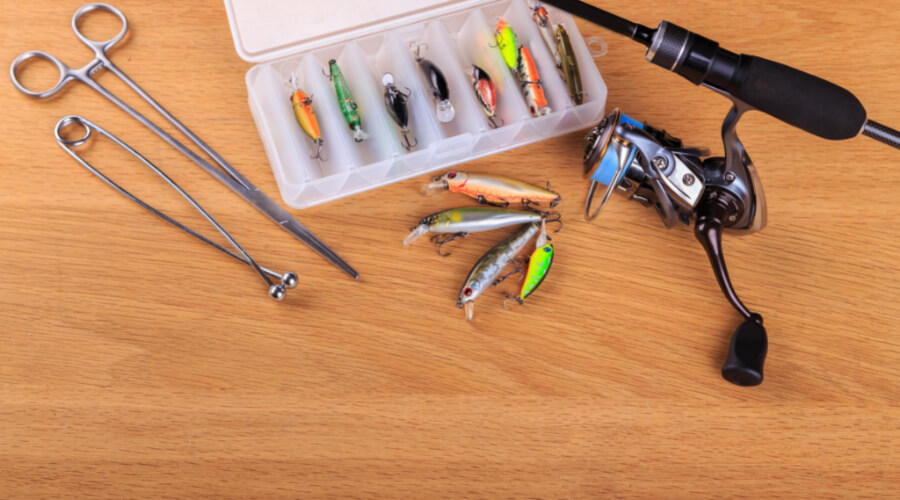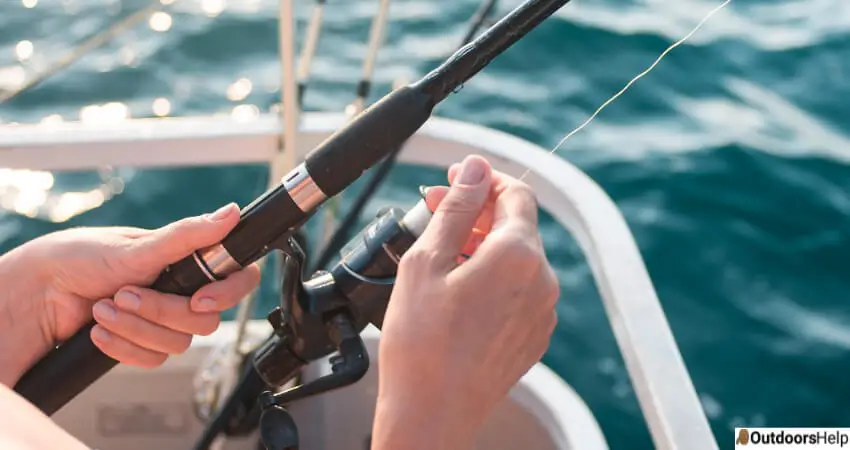Fishing is synonymous with tying knows. You have to learn different types of knots and how to tie them for a smooth and successfully fishing expedition. One of the things that you have to do is link the fishing hooks to the line. There are different knots that you can use to keep the hook in place and avoid losing it while fishing. Each one of them is simple once learned with their benefits. Here we explain how to tie a fishing hook using 5 different knots.
1. The Improved Clinch Knot

Many anglers use the improved clinch knot to tie a fishing hook due to its simplicity. You will not spend a lot of time learning how to do it. Apart from securing your hook, the knot can also be used in tying the swivels and lures to the angling line. The knot can withstand the fight from a big catch since it is firm, sturdy, and reliable.
Follow the steps below to tie the knot:
- Pass the end of the line slowly through the hook’s eye and wraps it like on the 5 times on the rest of the line
- Pull the end of the thread towards the hook eye
- Insert the tag end through the first loop from the hooks eye and bring it back
- Moisturize the knot and pull both the running line and the tag end tightly. If there is extra line hanging on tag end trim, and your hook is perfectly tied, as shown in the diagram above.
2. The Palomar Knot
The Palomar knot is the most reliable knot for tying the line to the hook. It can also be used t secure a swivel to the end of the angling line.
Follow the steps below to tie the knot:
- Double the line to create a loop then insert it through the hook’s eye
- Tie a wobbly overhand knot leaving the hook to hand from the bottom
- While holding the overhand knot move the loop carefully over the hook. then slide it above the hook’s eye
- Pull both the free line and the tag end to tighten the knot. Your hook will be ready for fishing.
3.Knotless Knot
The knotless knot is an easy and quick way of Snelling a hook. This type of knot is mainly used by carp anglers to tie the fishing line to the hook. The loop section can be used to secure baits, which is useful with self-hooking properties.
Follow the steps below to tie the knot:
- Start by cutting the leader to your preferred size and tie a loop at the end that will hold the lure. Insert the loose end through the hook’s eye and put the loop to the desired position. The line should follow through the shank.
- Holding the shank and the tag end wrap your fishing line 5-8 times from the shank backward.
The lines should be well done without overlapping to keep them orderly and neat.
- Grab the free end and thread it through the hook’s eye slowly.
- Moisturize your knot and pull the tag end tight while holding the loop end to the preferred position firmly. Your hook will be tied well with a knotless Snell knot.
4.UniKnot
Many anglers preferred the Uni knot, also called Hangman’s knot, since it is sturdy and simple to tie. The knot can be used to tie the fishing line to the hooks, swivel, and terminal tackle. It can also be used to Snell the hook. Check Video for inspiration.
Follow the steps below to tie the knot:
- Pass the line through the eye of the and double back it such that the thread is parallel to the standing line.
- Wrap the thread on the hook making abot7-8 turns with the tag end passing through the loop and around the double line
- Lubricate the fishing line and pull the tag end to tighten it snuggly.
- Adjust the knot slowly by sliding it downs the eye of the hook. A small loop can be left if desired. Finally, trim extra tag end, and your fishing hook will be ready for the next expedition.
5. Turle Knot

If you are fishing using a fly rod, then you have to learn how to tie a turtle knot. The knot is used to attach a fly or small hook to a thin line. When connecting flies with turned-up or turned-down hook eyes to the leader or tippet, especially when fishing steelhead and salmon fish, the turtle knot is the most ideal.
The knot creates a straight connection of fly or hooks to the tippet or the leader. It also adds fly movement making it more attractive to the targeted fish. Check the video for inspiration.
Follow the steps below to tie the knot:
- Put through the tag end of tippet or leader through the hook’s eye
- Form a loop at the other end of the standing line. Use your thumb to pinch the line and bring the tag end over running it through the first loop.
- Wrap the line 2-3 times around the standing line and pass the tag end through the loop next to your thumb.
- Slide the knot snuggly up and down on the standing line
- Slide your hook towards the knot and trim any excess tag end
- Pull the string to secure and hold the hook in place. Your fishing hook is ready for fly fishing.
Final Word
You are now ready and more prepared for your upcoming fishing expedition like never before. The above types of knots help secure your hook in place to ensure the catch does not get away with it. Plus, you know how to do it easily and straightforward. There is no better way of doing it well rather than following the above instruction once you have your hook and the line.
If you do not get it the first time, try again. With little practice, you will become an expert in it. Do it and be the one to show your fellow anglers how to do it the best way!

